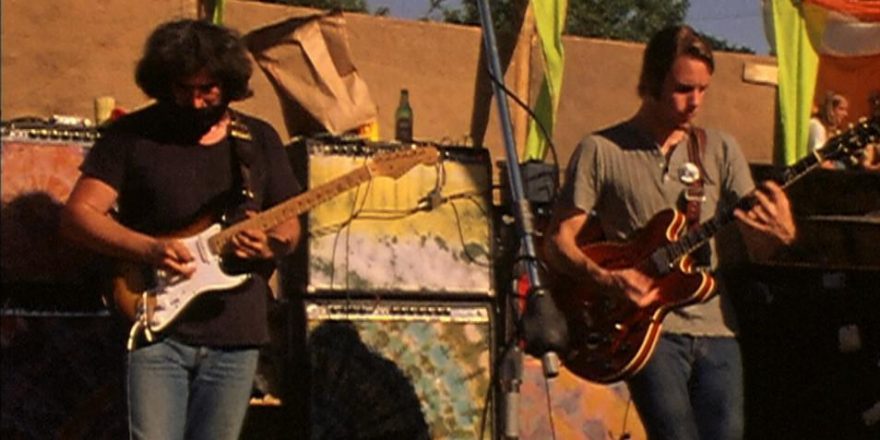In my late 20s, I started noticing that I didn’t listen to music in the way I used to. Specifically, nothing about music felt satisfying to me anymore. Like all my friends, I’d gotten an iPod and ripped most of my CDs into it, so now every album I’d ever owned was suddenly sitting in my pocket, ready to be called up at any time, but I didn’t feel like listening to any of it. I could shuffle my way through every song that had ever moved me, but somehow once it came on all I wanted to do was skip to the next random song in the order. That song wouldn’t satisfy me either, so my finger would hit that “skip” button again, almost as an impulse. Now that my music no longer had any physical form, it was as if it had become weightless, almost meaningless.
I started to see the same change in my friends. Their enthusiasm in music seemed to be fading. They frequently talked about not liking any new bands. They circled back to the same old CDs they’d had for a decade and had just now ripped into their iPods, but they felt dissatisfied even with those. When we were kids, we had felt ready to die for some song, but now that was the same song we were skipping after 30 seconds, trying and failing to feel something.
As a musician, this terrified me. It actually felt like a genuine crisis in my life. I realized that if I didn’t get a visceral, almost physical thrill from music, I felt like some kind of a fraud. I was lying to people. I had to get excited about music again in order to save my work and my happiness. So I decided that I would devise a special system for listening to music.
I should preface my explanation of this system by admitting that it’s partly insane. The insaneness of the system is one reason why so many people have told me that I should write a piece about it, and the insaneness of the system is part of the reason that I like the system. It is devised only for me, and so I’ve let it become as obsessive and gnarled as I want it to be. At the heart of the system, though, is a realization I made about MP3s, streaming audio, and really all of the modern music-related technology of the last couple decades — this stuff doesn’t work the way it’s supposed to.
Recording software like Pro Tools was supposed to eliminate all the restrictions of recording on tape; it instead allowed musicians and producers to put off creative decision-making indefinitely because performances and mixes could always be “fixed” later. File-sharing and streaming services promised a vast free library of all existing human music, but mostly they ended up putting present-day working musicians out of their jobs. We were told that MP3 players and smartphones would bring us closer to our favorite music, but they sheared it of its physical form and made it feel like it didn’t exist. We were sold a lot of these changes with the promise that they’d give us more power, more choice, but the people who made these changes to music weren’t musicians and didn’t consult musicians. They were entrepreneurs, mostly, and even though they might have posed as visionaries they were really out to make a buck, or to make a name for themselves. They dismantled a structure that happened to be working and left no structure to replace it. They sold us the ideal of our tools becoming so simple that they would just disappear, but the truth is that tools create discipline and form, and that limitations create engagement. Too much choice and too much freedom mostly just overwhelm people and cause inertia.
The real freedom in listening happens when you take away some measure of choice and control — when you put a record on and then walk away from the player, letting it spin, your hand unable to skip anything. Even better if it’s an entire album — a collection of songs, put together with deliberate care, a product of a certain time and place. When you lift Astral Weeks from its sleeve and put it on a record player, for instance, you’re hearing what happened between five musicians in Century Sound Studios in the fall of 1968 in New York City: the literal soundwaves, physically carved into vinyl. When “Sweet Thing” comes on as track three, it’s sweeter because of the path you took to get there, which happened in real time; the title track and “Beside You” feel like landmarks on a road trip, and then the road opens up and you suddenly get this breathtaking view. The needle is moving forward down the groove at the same velocity as you are moving forward through life. You don’t have every option in the world at your fingertips, but you have a deeper relationship with the option you’ve taken.
So that’s where I started, with my memories of putting on a record (or, later, a cassette) as a kid and then sitting back on my bed and listening to the whole thing — and then playing it again, and again, until I had integrated it into who I was. I decided the first step in creating a system that replicated this effect on an iPod (because I didn’t have a place to live at the time, my iPod was my only way of listening to music) would be to listen to whole albums, in order to immerse myself in a musical world and not lose concentration. Secondly, I noticed that my relationship to an album changed with repeated listens; sometimes an album I thought I hated on listen one became a new musical obsession by listen three, while at other times an album that impressed the hell out of me on listen one gradually revealed itself, after repetition, to be trite or cloying, dazzling me with easy tricks but lacking in actual substance. I started creating playlists — each containing three albums plus miscellaneous songs I’d picked up here and there — and listening to them three times in a row. These playlists were all I’d allow myself to listen to unless I was with other people, and I treated them like homework; usually the albums would be related to music I was working on at the time. I would take care always to work in a mixture of music by new bands and older music that was new to me, and I would actively seek out genres of music with which I previously hadn’t been familiar.
Almost immediately after adopting this system my love of music returned and actually became stronger than it had ever been, even as a kid. I also noticed that I started marking time with music. Paul McCartney’s Ram now sounds, to me, like waiting for hours to go through customs at the Vancouver border crossing on a monthlong road trip I took in 2006. Ata Kak’s Obaa Sima reminds me of the sticky Brooklyn summer of 2010 when I was just starting to write songs for I Am Very Far. Iggy Pop’s New Values will always sound like the sticky rock clubs of our September 2011 tour of the south. There are drawbacks — sometimes when someone gives me a new album I don’t get to it until it comes up in my playlist rotation, and I don’t always hear new stuff that comes out the instant it comes out — but in a month I’ll listen, in depth, to about 5-10 new albums and usually emerge completely obsessed with something that 30 days ago I knew nothing about, or vaguely suspected I’d dislike. And sometimes I have to listen to an album I hate three times, but at least by listen three I clearly and thoroughly understand what it is I hate about it.
(Things get even more complicated from there; that’s the gnarled and insane part I referred to above. I don’t want to go into it too much but it basically involves rating every song on listen three and sorting them into literally thousands of playlists based on tempo, genre and subgenre, year recorded, places referred to in the songs, places the musicians hailed from, themes in the songs, stylistic elements in the songs, what season the songs feel appropriate for, what time of day the songs feel appropriate for… and it gets even more complicated than that. These playlists are what I use when I listen to music with people or when I need to musically medicate in emergency situations on tour. For example, I have a playlist to listen to if I get depressed, a playlist to listen to if I get angry, a playlist to listen to if I think my plane is going to crash. And if I’m drinking with the band in a hotel room after hours and I want to listen to downtempo soul love songs recorded between 1970 and 1974 in the Midwest, that’s easy to throw together. I’ll leave this paragraph in parentheses so its craziness doesn’t spread out and affect the rest of this piece, and because it’s essentially a side aspect that grew out of the way the system was making me think about music.)
Listen. I’m not saying you have to follow my system. I’m not saying you have to follow any system. If music is working for you, then keep doing what you’re doing. I always liked music more than love and more than any drug, and there came a time when I felt like I had to make a date with music to keep the spark going, or where I felt like I needed a higher-bioavailable, less stepped-on version of music, where I needed something purer. And I realized that what I needed wasn’t more choice and more freedom but more discipline, that discipline would actually make me free, that I needed a way to find my own version of what new technology had taken away. For me, that meant removing infinite control and following one single record at a time repeatedly, all the way, deep into where it was trying to lead me.








